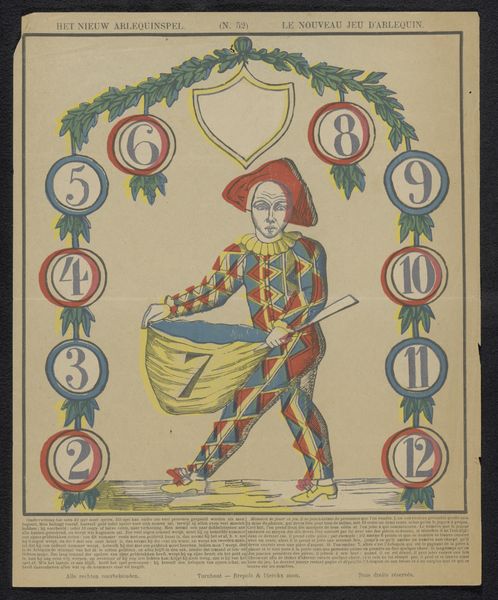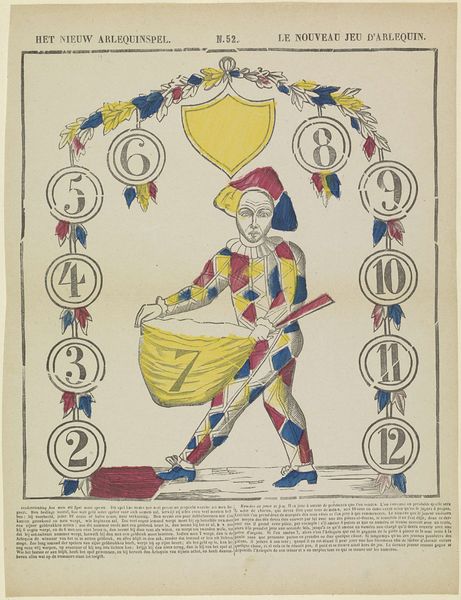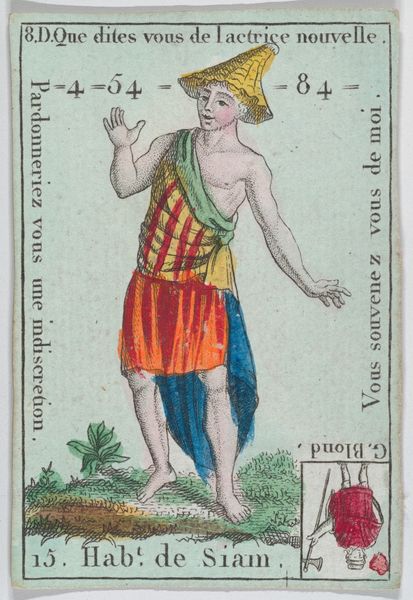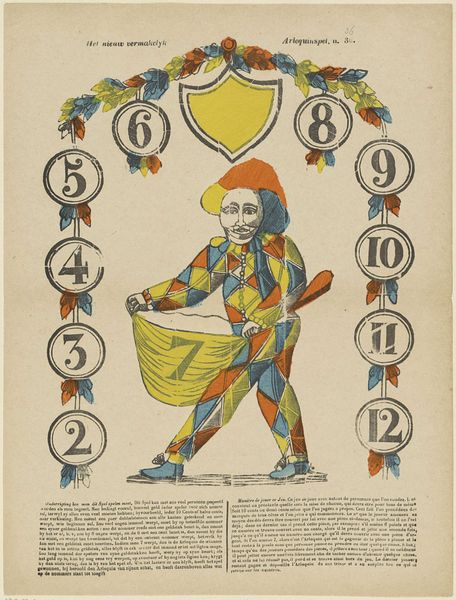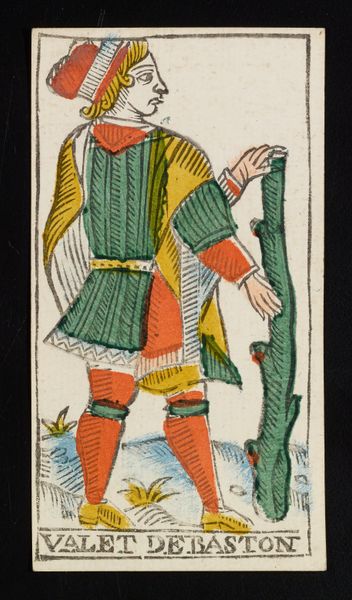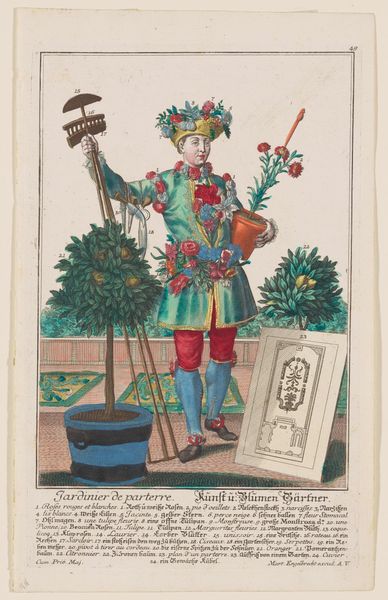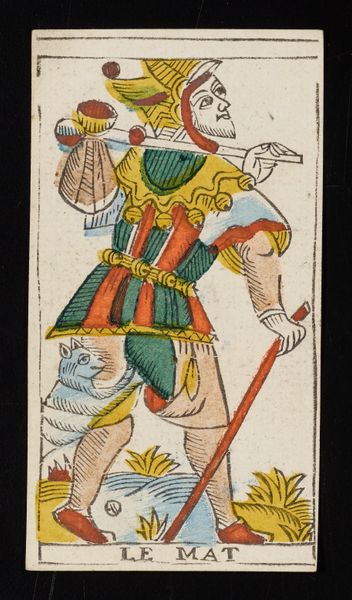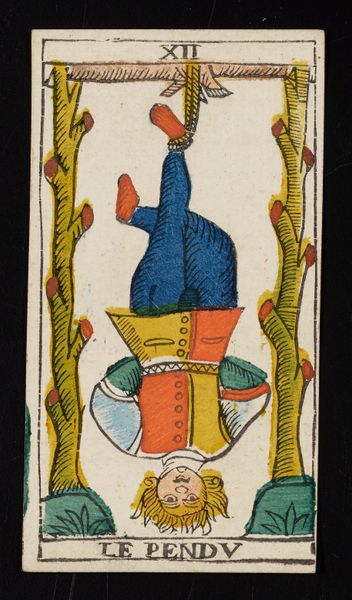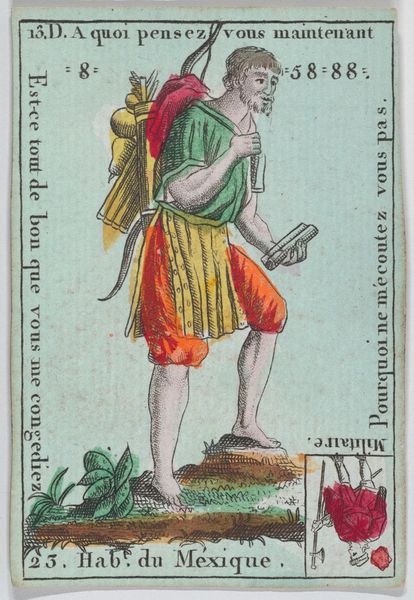
Dimensions: height 373 mm, width 305 mm
Copyright: Rijks Museum: Open Domain
Curator: Here we have "Het nieuw arlequinspel / Le nouveau jeu d'arlequin," dating from 1833 to 1911, created by Brepols & Dierckx zoon. It is currently held at the Rijksmuseum and I believe the piece is a print. Editor: I'm struck by its whimsical nature. The use of numbered circles bordering the harlequin figure seems deliberately designed. What compositional elements stand out to you? Curator: Immediately, I observe the interplay between figuration and abstract design. The symmetrical arrangement of numbered circles framing the central figure creates a tension, a push and pull, against the dynamic pose of the Harlequin. Note also the limited color palette – primarily reds, blues, and yellows – that reinforces a formal unity. Editor: So, the colors and shapes aren't just decorative, they are integral to the meaning? Curator: Precisely. Each compositional choice, the linework, color and form is strategically implemented, suggesting the intent and care that goes into a painting's construction. The surface is activated by what seems like a playful symmetry and balance; can you describe it? Editor: Well, the artist strategically uses complementary colors to amplify each numbered design. The figure also has vertical balance because of its hat. Is it common to mix representational and non-representational styles in this period? Curator: To the degree the piece does, no. The juxtaposition, whether intentional or not, provides formal insights and aesthetic tension worth considering as an exercise in balance and juxtaposition. Editor: So, by considering the forms, colors, and composition, we're invited to focus on the art’s internal logic? Curator: Indeed. It underscores how crucial close looking and a deliberate formal examination remain to decoding and appreciating works from all periods and locations.
Comments
No comments
Be the first to comment and join the conversation on the ultimate creative platform.
